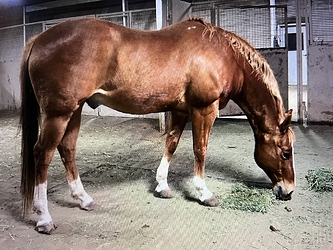My 15 yr old Arabian gelding has always been a “trippy” sort of guy, especially when he’s gawking and not paying attention. He trips in fields (while riding), groomed arenas, uneven arenas, trails etc. I don’t love it but since he has always done it with me (got him when he was 8 and only green broke), I assumed it was his normal, and he never went down, just…tripped.
Attempts to get him to “pay attention” to his feet have not worked much. He either is or he isn’t.
This summer though, within the last 2 weeks, he’s tripped two times, badly. Once was last Friday, cantering right, and he went down so fast he hit his knees and face and I rolled off over his head. We’re both fine, but it scared me. My trainer was there and she couldn’t even tell what happened it happened so fast.
Today (Sunday, a week and 2 days later) he tripped going right at the trot. He did not go down but it was a ‘big’ trip, unlike his ‘little trips’ and it felt like he might have gone down had we been cantering. DH, who is a horse person, said he looked like he was being lazy/not paying attention–but my horse was actually not being lazy but was distractible and being over-reactive.
I mentioned today’s close call it to my trainer and she said that this was out of the norm for my horse and I need him checked out.
I agree and I won’t be riding until we have him assessed. I will longe him tomorrow with an eye to his soundness and in side reins to see if I can really observe the ‘trips’ from the ground.
Vet is going to get me in this week, but I need a plan of what to look for… Horse appears quite sound at longe and feels sound under saddle. He is very fat this year even on a diet and with more exercise than usual.
DH is my farrier and trimmed him 5.5 weeks ago. His feet are a little long, but nothing outrageous. So we will start here. Fall was at about 4.5 weeks, so again, nothing big. Saddle fitter was here about a month ago and everything seems to fit well there. No back soreness on palpation.
Considerations are checking for Lyme, EPM, lameness exam, neuro exam… so many options that I don’t know where to begin, and funds at the moment aren’t unlimited.
Any thoughts are helpful!!!
Small Update post #21

